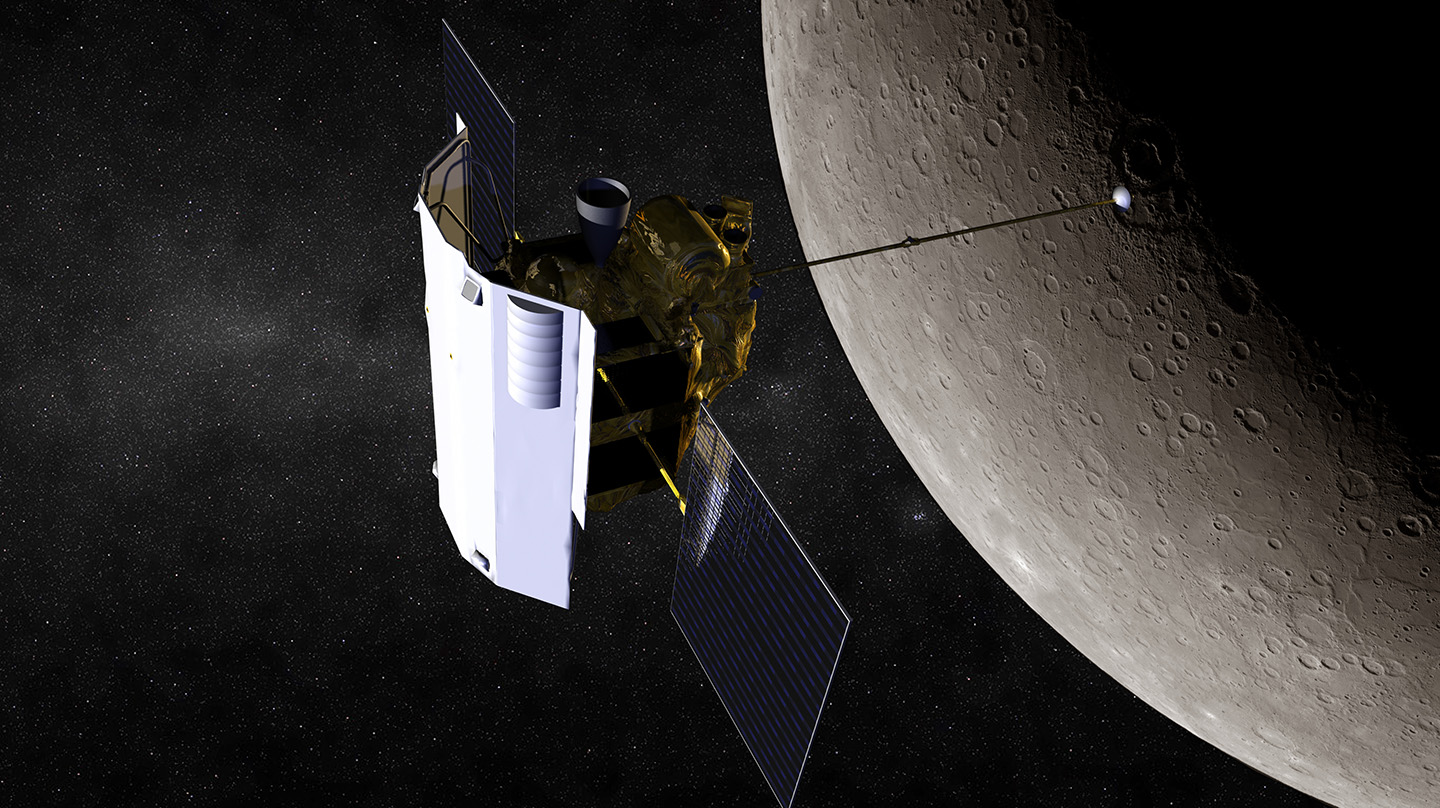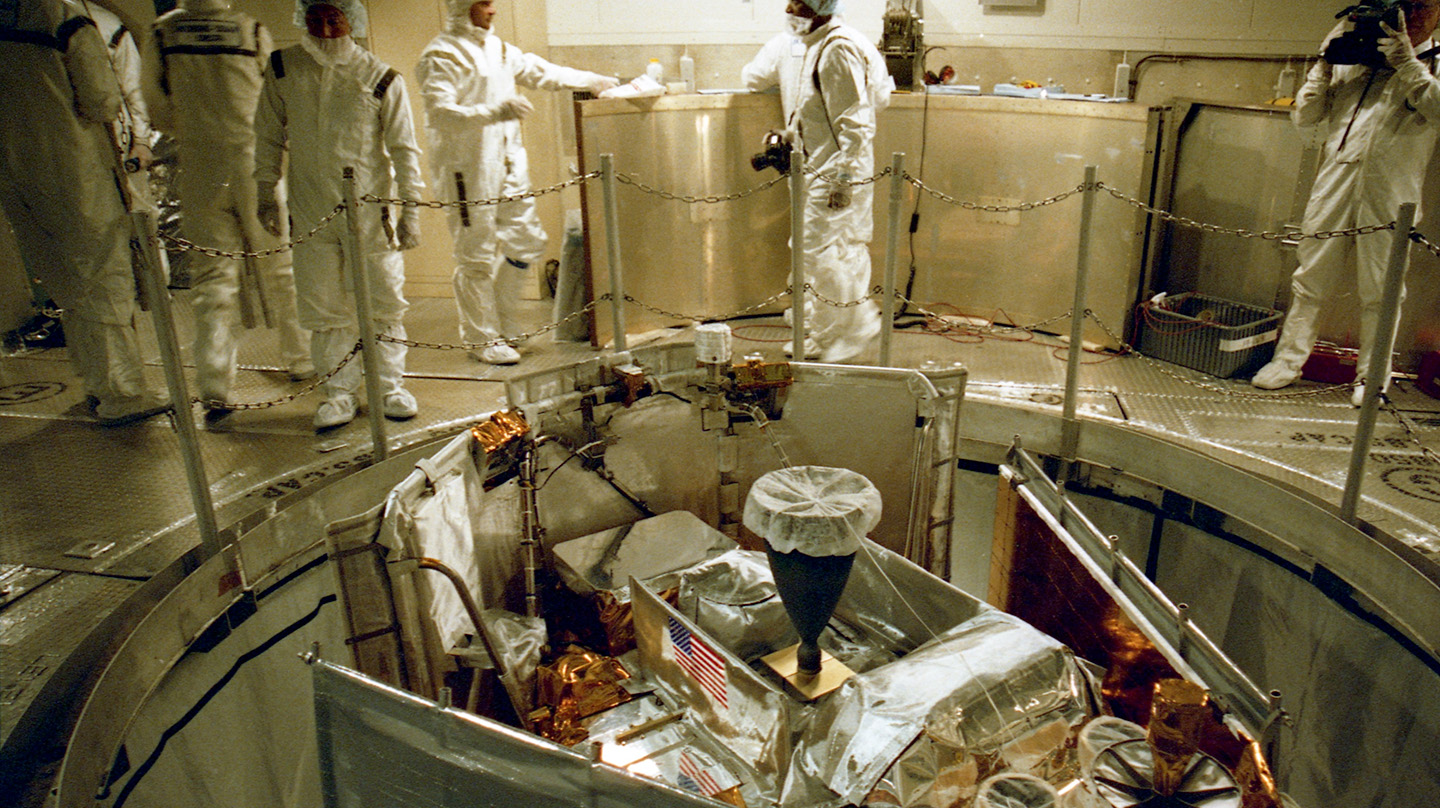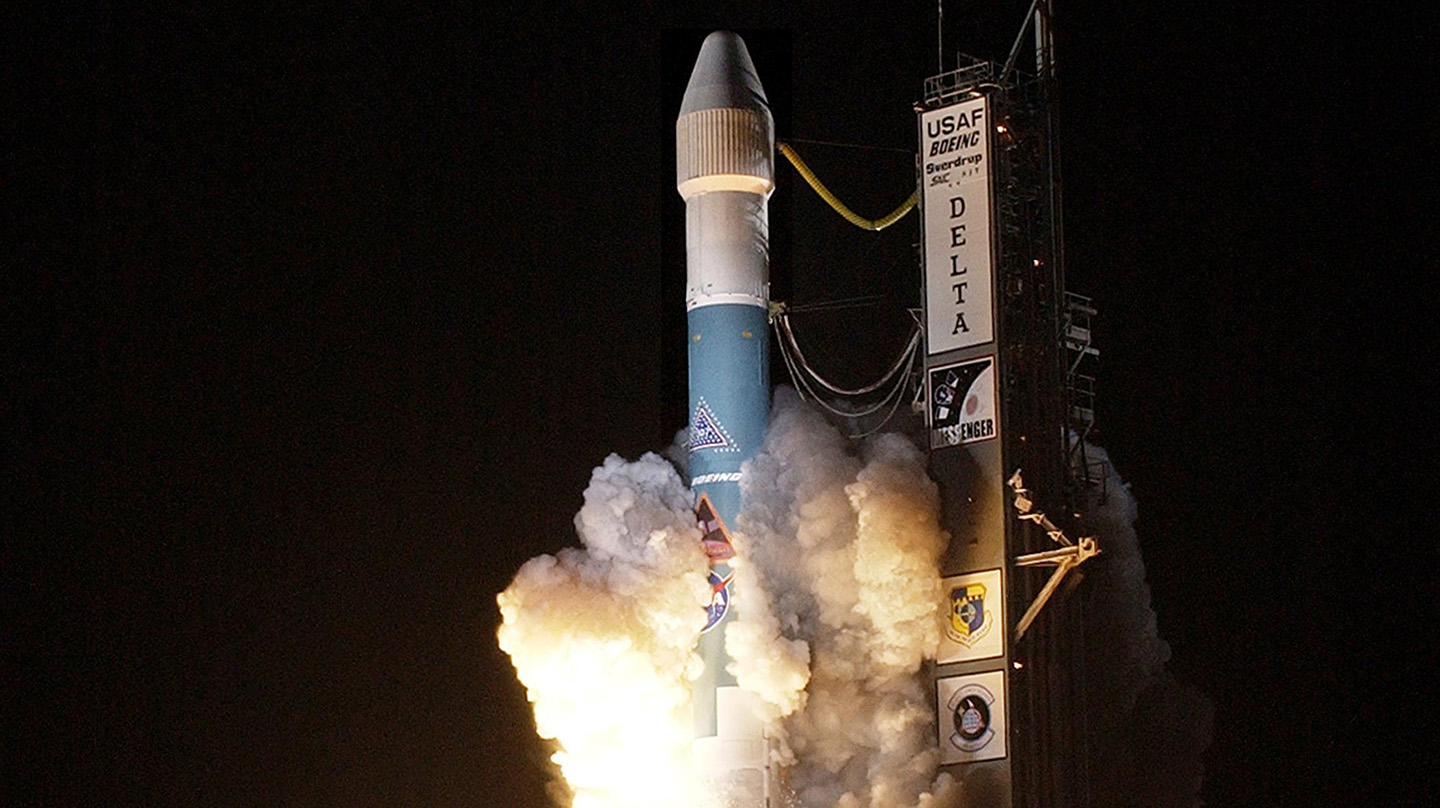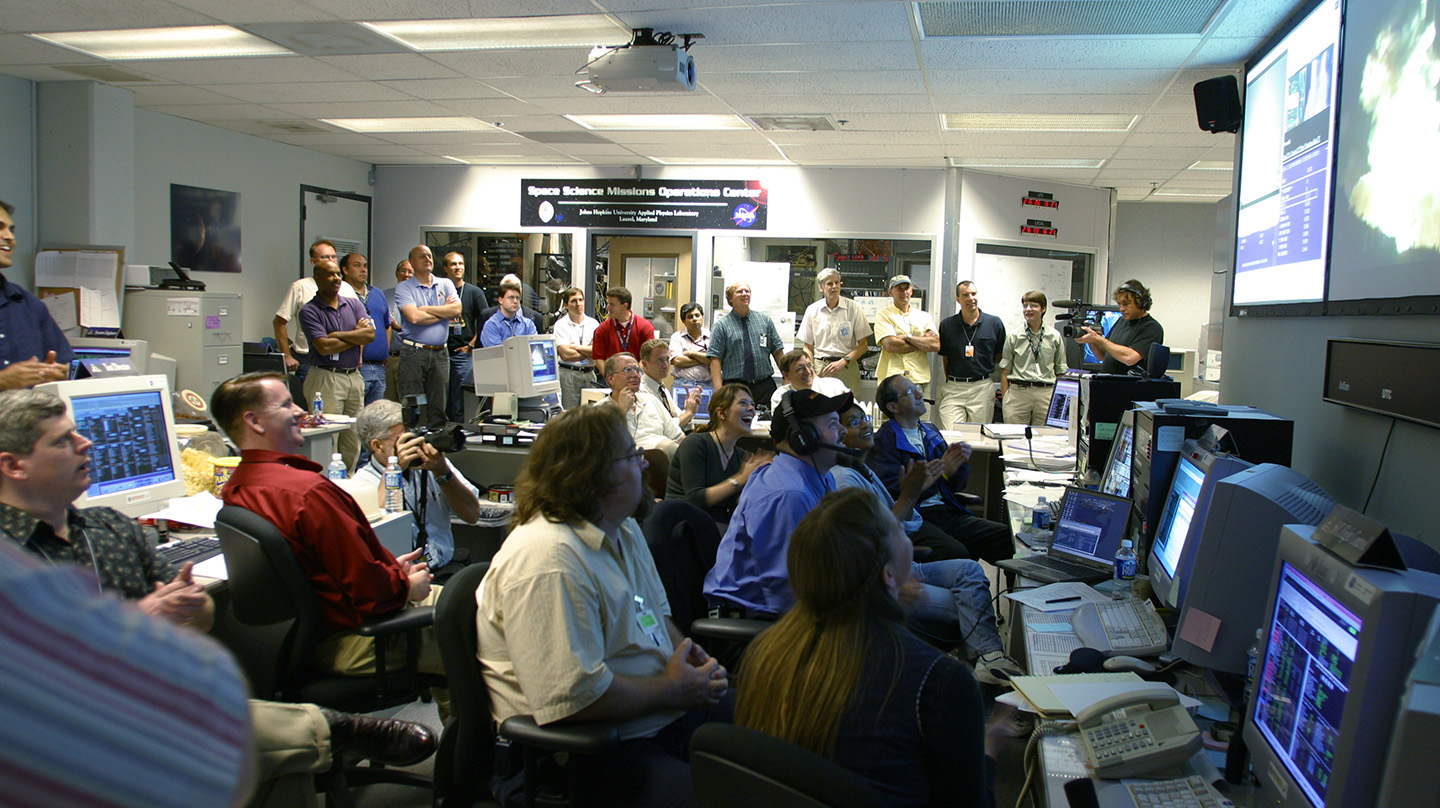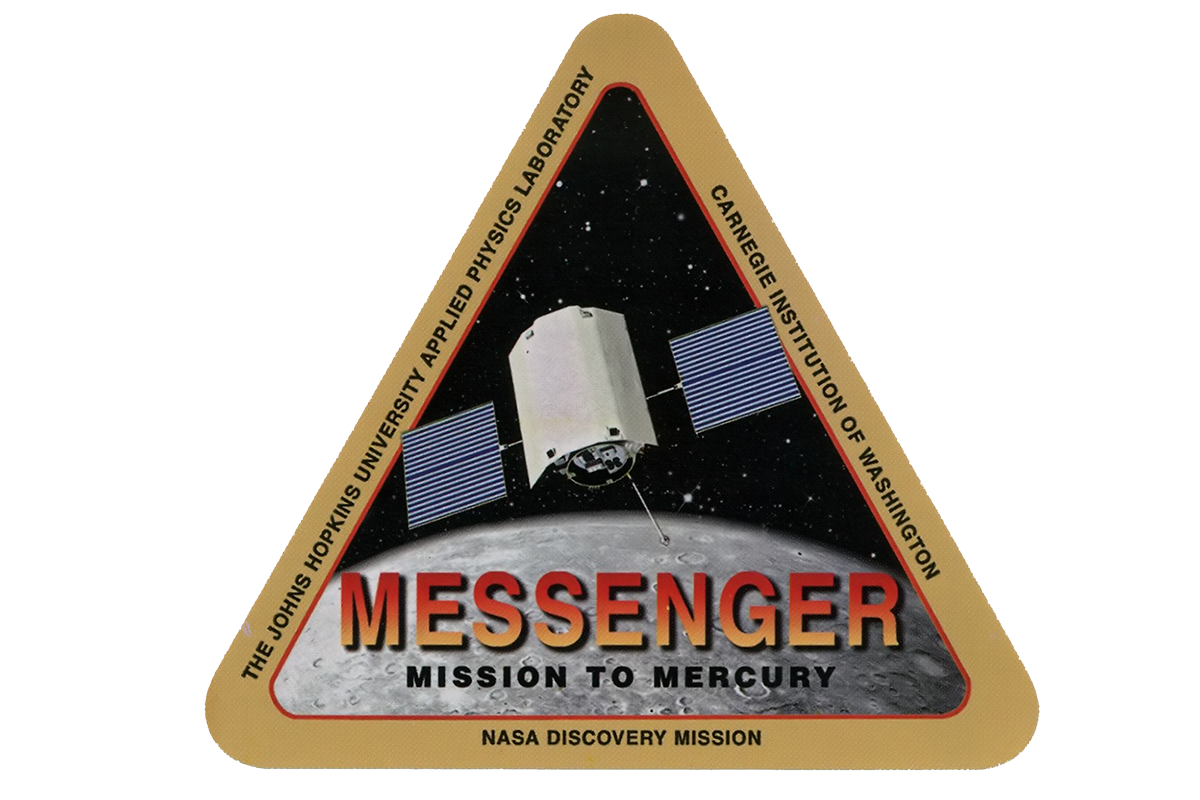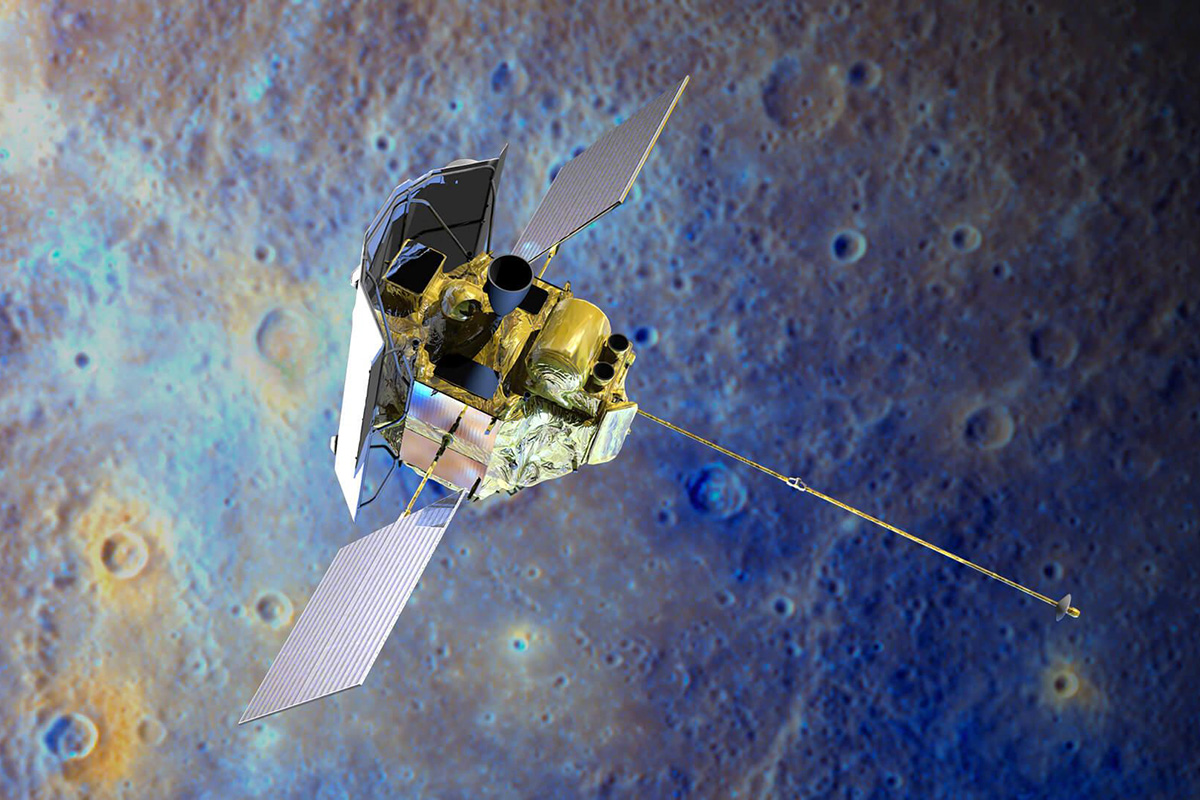News
Twenty Years After Launch, MESSENGER’s Exploration Legacy Endures
At precisely 2:15:56 a.m. EDT on Aug. 3, 2004, a Boeing Delta II rocket lifted off from Cape Canaveral Air Force Station in Florida and set NASA’s MESSENGER spacecraft on an unprecedented mission to explore the planet Mercury.
A seven-year trek through the inner solar system lay ahead, but anticipation and excitement for what MESSENGER would discover as the first spacecraft to orbit Mercury had been building for years — and was hard to contain. “With MESSENGER on its way to Mercury,” predicted Mike Griffin, head of what was then APL’s Space Department, “the reality is sinking in that in a few years, we will see things that no human has ever seen and know infinitely more about the formation of the solar system than we know today.”
He was spot on.
Designed, built and operated at the Johns Hopkins Applied Physics Laboratory (APL) in Laurel, Maryland, MESSENGER (short for MErcury Surface, Space ENvironment, GEochemistry and Ranging) orbited Mercury for four years, providing the first images of the entire planet. Before a planned crash onto the planet’s surface on April 30, 2015, the spacecraft also collected detailed information on the composition and structure of Mercury’s crust, its geologic history, the nature of its thin atmosphere and active magnetosphere, and the makeup of its core and polar materials — confirming there really was water ice on the Sun’s closest planetary neighbor.
“MESSENGER was a trailblazing mission that showed the world a new way to conduct first-of-its-kind space exploration,” said APL’s Ralph McNutt, who served as MESSENGER project scientist. “Before MESSENGER, understanding Mercury and how it formed was one of the largest unsolved puzzles in space science. This mission not only gave us our first comprehensive look at the innermost planet, the data it sent home continues to revolutionize our understanding of Mercury and the inner solar system.”
MESSENGER — the 61st spacecraft designed and built by APL — was crafted to meet the challenges of orbiting Mercury. A ceramic-fabric sunshade, solar panels that were two-thirds mirrors, and a mission design that limited time over the planet’s hottest regions (while also countering the gravitational tug of the Sun) protected MESSENGER without expensive and impractical cooling systems.
To fit behind the roughly 8-foot by 6-foot sunshade, MESSENGER’s systems and instruments were packed into a frame that could fit inside a sport utility vehicle. Its science payload, which included seven instruments and a radio science experiment, were all designed to operate in the extreme environment near the Sun.
“MESSENGER embodied the creativity, ingenuity and innovation APL brings to bear on the nation’s toughest space science and engineering challenges,” said APL’s Helene Winters, who served as MESSENGER project manager from 2013 to 2018. “We see MESSENGER’s influence today in APL-designed missions like Parker Solar Probe — resourceful approaches to exploring the most extreme environments in the solar system and delivering textbook-changing science.”
